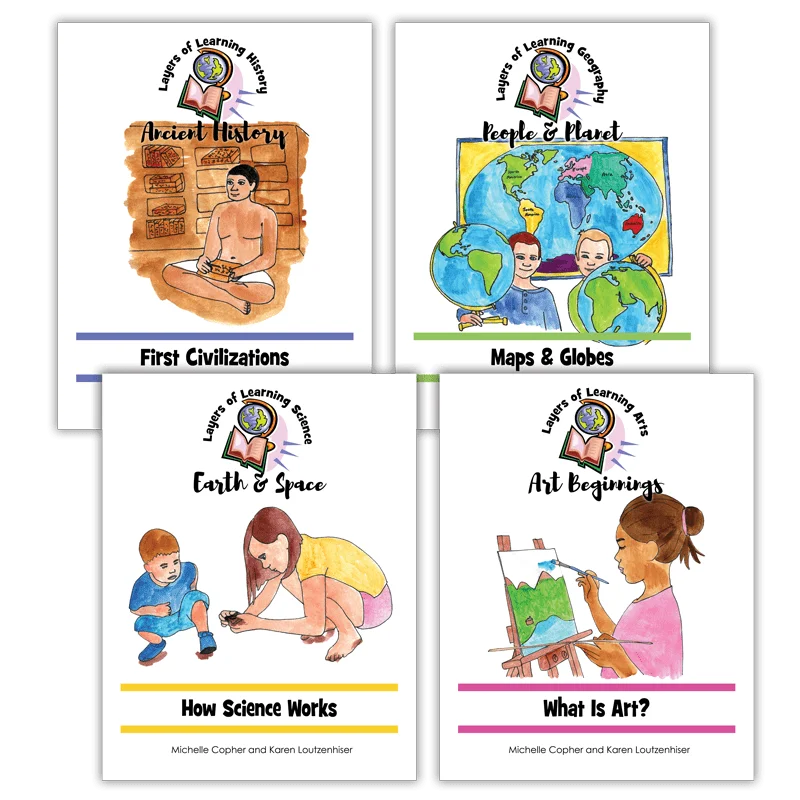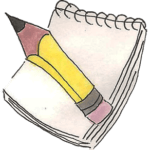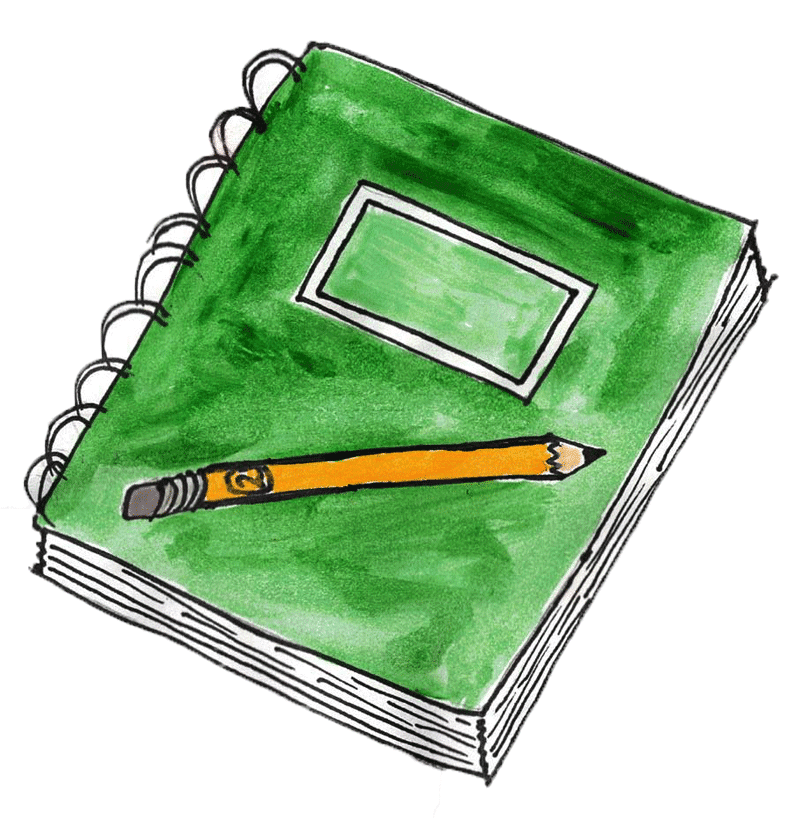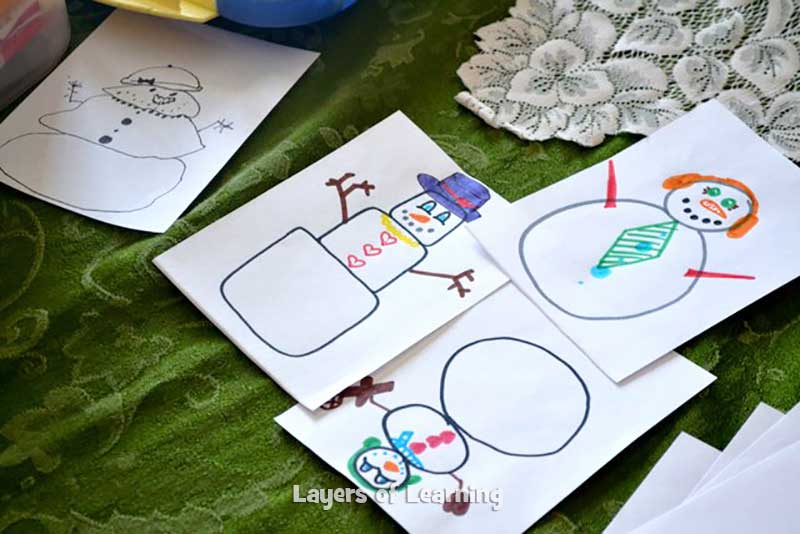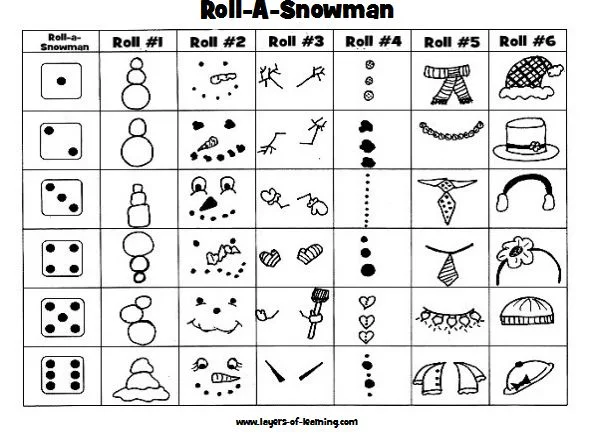This exploration is for all ages, as the colored smilies show. Everyone in your family can break out their sketchbook and do a quick draw as an art lesson warm-ups together.



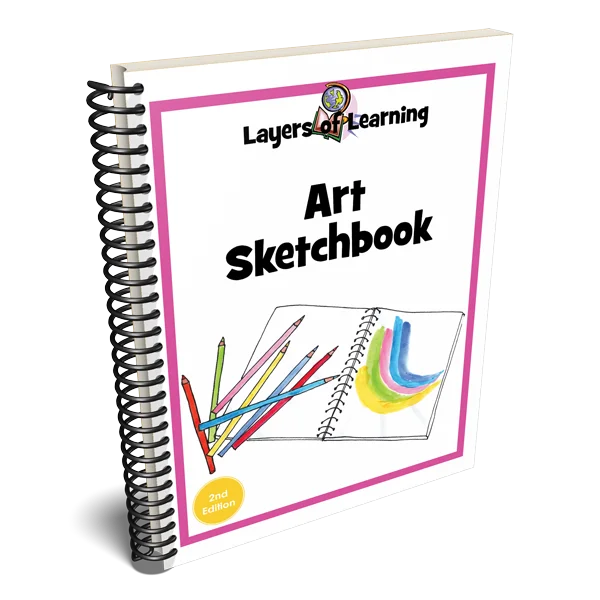
Quick Draws are something we do in conjunction with every art unit in the Layers of Learning program. Watch as your kids’ awareness of lines and shapes and their artistic confidence boosts up as sketching becomes a part of every art lesson. The Art Sketchbook has a section in the back for quick draw warm-ups. Layers of Learning has hands-on experiments in every unit of this family-friendly curriculum. Learn more about Layers of Learning.
Before any art lesson, begin with a Quick Draw. It is simply a sketch within your sketchbook. Sometimes we choose a seasonal or holiday theme. Other times we find a how-to-draw tutorial. Still, other times, we play sketching games.
Quick Draws are just a little warm-up to get our creative juices flowing. There are lots of benefits to sketching, so it’s a big part of our homeschool.
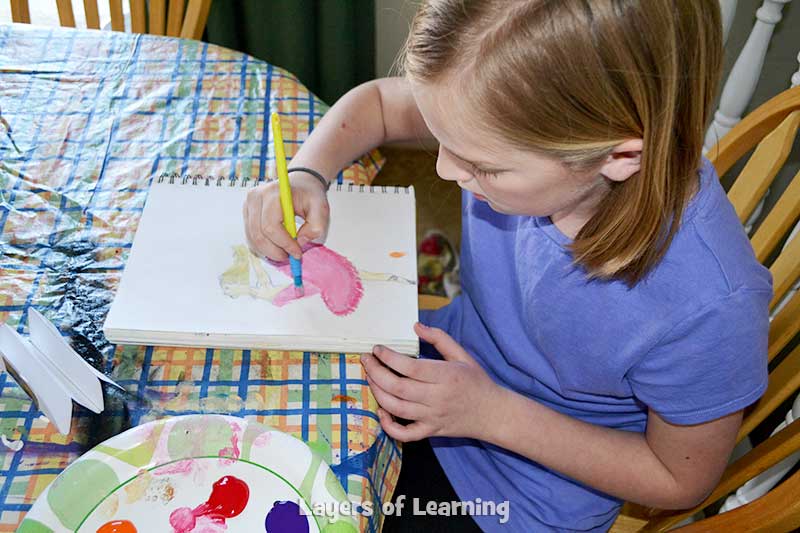
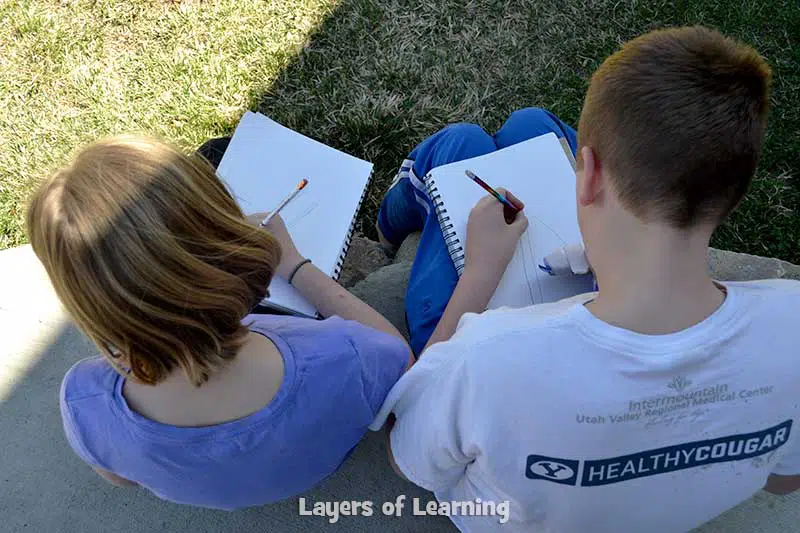
Benefits of Sketching
At the beginning of many of our art lessons, we do a quick draw as a warm-up. In fact, my kids enjoy it so much that even though we don’t have art lessons every day, they almost always have a 5-minute practice sketch. The kids and I all pull out our sketchbooks and do a quick draw sometime during our school day. There are many, many benefits to regularly sketching.
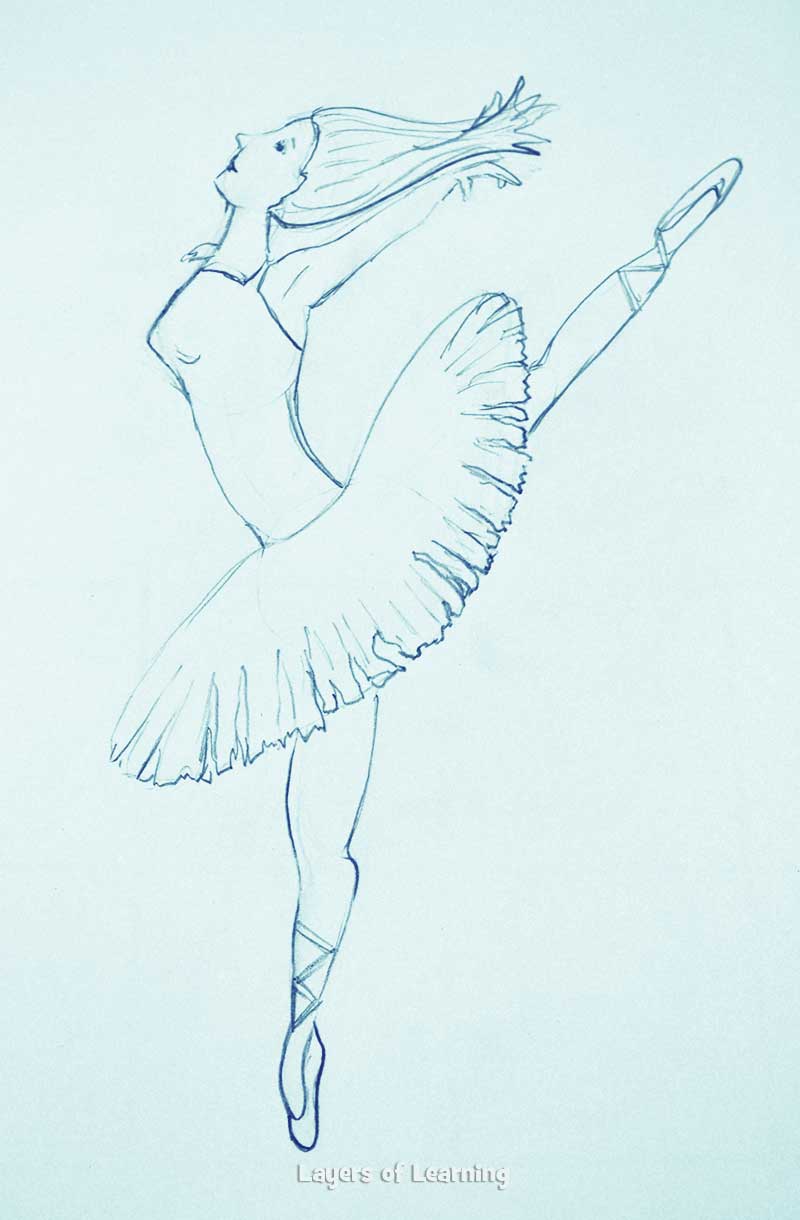
- Sketching helps you think creatively and encourages open-ended thinking and problem-solving. Many people don’t realize that most creative endeavors are built on the backs of others. We take ideas from others, imitate them, then expand them. Great artists have always studied the work of other artists, then replicated it, then made their own spin-offs. This creative process will naturally develop as you regularly sketch.
- Sketching build patience, focus, attention stamina, and hand-eye coordination. If your kids struggle with writing at all, sketching can be a gentle way to expand those writing muscles and attention to detail.
- Sketching has been shown to increase confidence and a sense of accomplishment in kids. With improvement comes confidence.
- Sketching is restful and mindful at the same time. It is a terrific stress reliever and provides a calm, quiet activity that is simultaneously intellectual and thoughtful.
- Sketching improves communication skills. It causes us to slow down enough to be deliberate and think of things in a step-by-step way.
Step 1: Library Research
As you begin sketching, it can be helpful to build up a little collection of how-to-draw books. We also use how-to-draw tutorials online. Layers of Learning has a How-To-Draw Pinterest Board that we add new pins to regularly as well. Here are some book suggestions, but if you can’t find these, look for how-to-draw books at your library. The colored smilies above each book tell you what age level they’re recommended for.
As Amazon affiliates, the recommended books and products below kick back a tiny percentage of your purchase to us. It doesn’t affect your cost and it helps us run our website. We thank you!

Draw Write Now
by Marie Hablitzel & Kim Stiltzer

How To Draw Animals
by Joseph Stevenson
Step 2: Quick Draws
You’ll need a sketchbook, pencils, and colored pencils.
How-To-Draw Tutorials
Start out your Quick Draw by getting a how-to-draw tutorial out, either online or in a book.
Everyone in your family can sketch the same thing together, or each person can be working independently. I always gently remind my kids that we are doing a QUICK draw. We only spend 5-10 minutes. Typically, we just leave our sketches as pencil drawings, but on occasion, we add color.
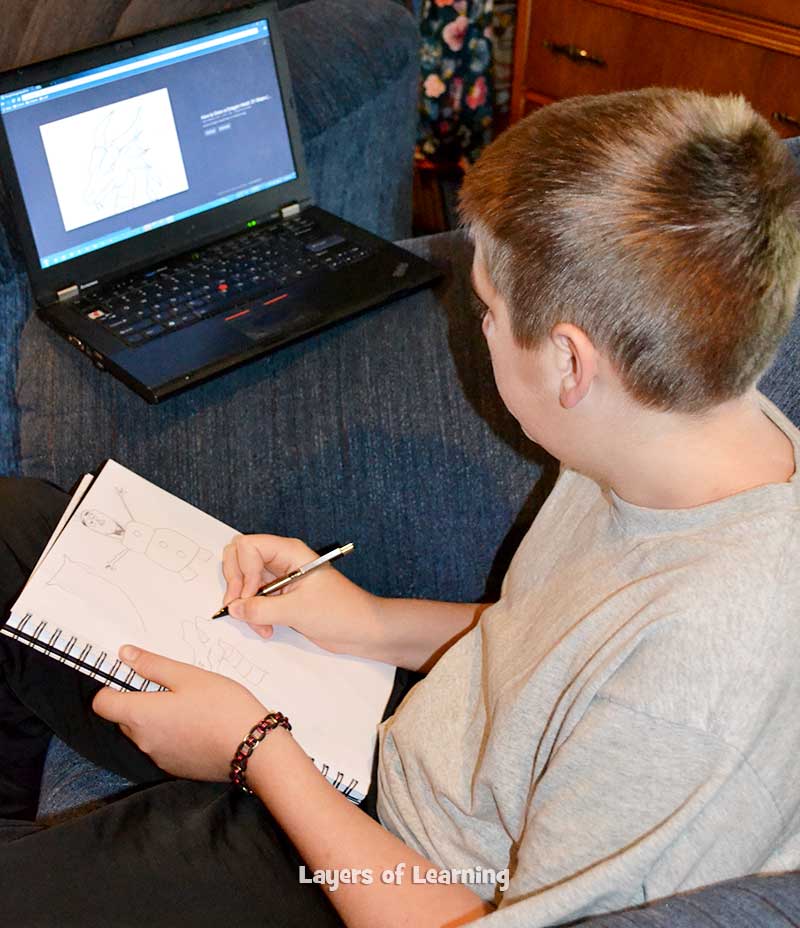
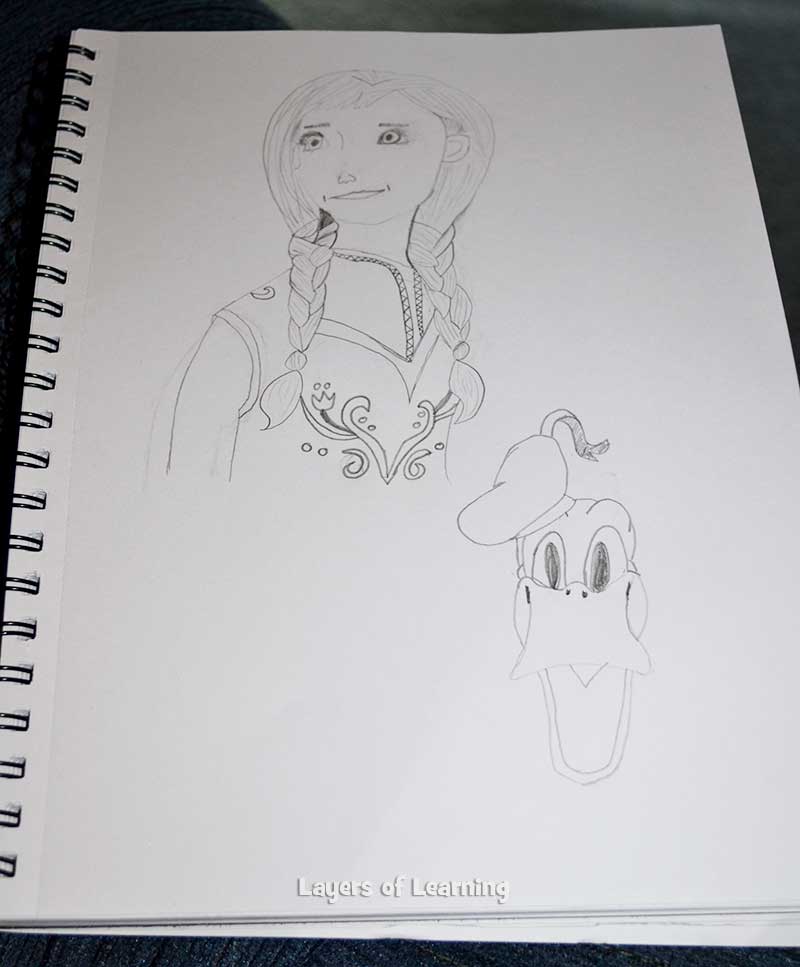
Drawing From Life
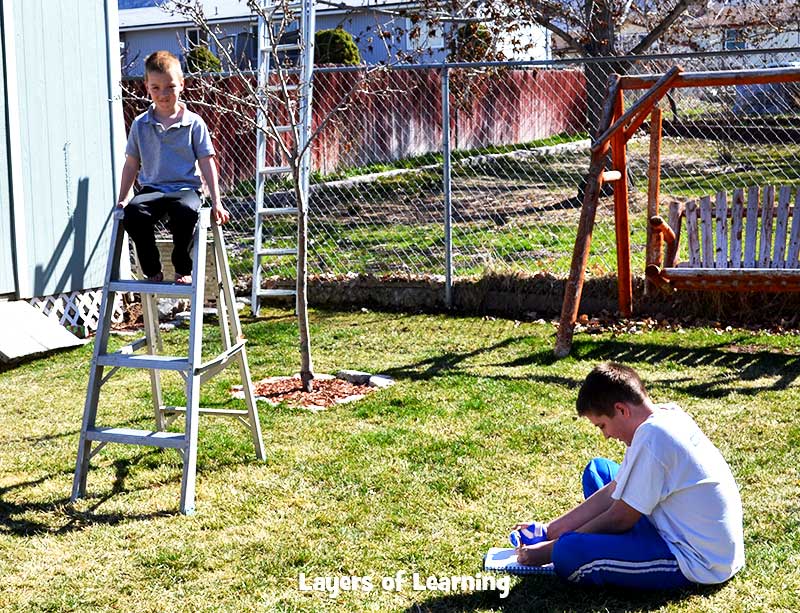
Because they’ve practiced so much with tutorials, my kids are now beginning to get enough confidence and know-how to draw real-life objects as well. Their brother even patiently sat on a ladder in the back yard so they could sketch him.
Kids can progress to drawing things from real books, from life, and from their own imaginations. Or you can alternate between life and tutorials. The route you take should be the choice of each individual.
Sketching Games
You can also play sketching games sometimes. We play Roll-A-Snowman every winter. Just take turns rolling dice and sketching the snowman parts you roll.
Growing Confidence & Skills
My kids aren’t necessarily artistic. This doesn’t come naturally to them. I’ve found though, that just like practicing math facts or memorizing poetry, the more we do it, the better we become. It’s a skill like any other, that can be practiced and improved upon bit by bit. My kids used to feel frustrated when they drew, but now they recognize the basic shapes objects are made up of and pick up a pencil quite confidently. It is now a calming, thoughtful activity that has improved their attention spans, creativity, and writing endurance right along with their drawing skills.
Step 3: Show What You Know
By the end of the week, we’ve filled up our sketchbooks with art we’ve sketched along with other art praojects we’ve done from the unit we’re on. We all get to take a few minutes and show off our sketchbooks to each other, cheer each other on, and talk about the things we learned in our art studies that week.
Additional Layers
Additional Layers are extra activities you can do or tangents you can take off on. You will find them in the sidebars of each Layers of Learning unit. They are optional, so just choose what interests you.
Deep Thoughts
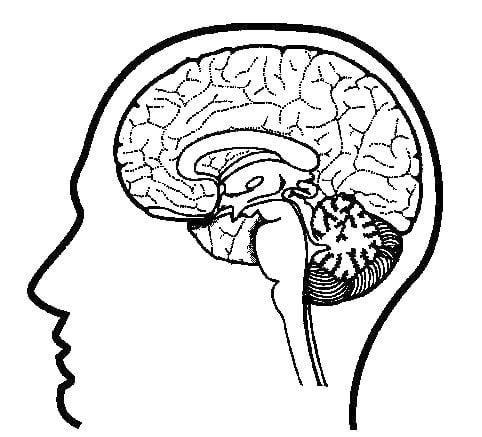
Many studies and brain research show that studying and creating art correlates strongly with higher math and reading scores, improved social development and self-worth, and increased creativity.
Discuss why you think this is so. What does art have to do with these skills?
Additional Layer
Use sketching beyond just art. As you learn a history, science, or geography concept, make a sketch about what you’re learning. If you add a caption or short description to your sketch, your mind will be aided in not only remembering, but also actually processing, learning, and understanding.
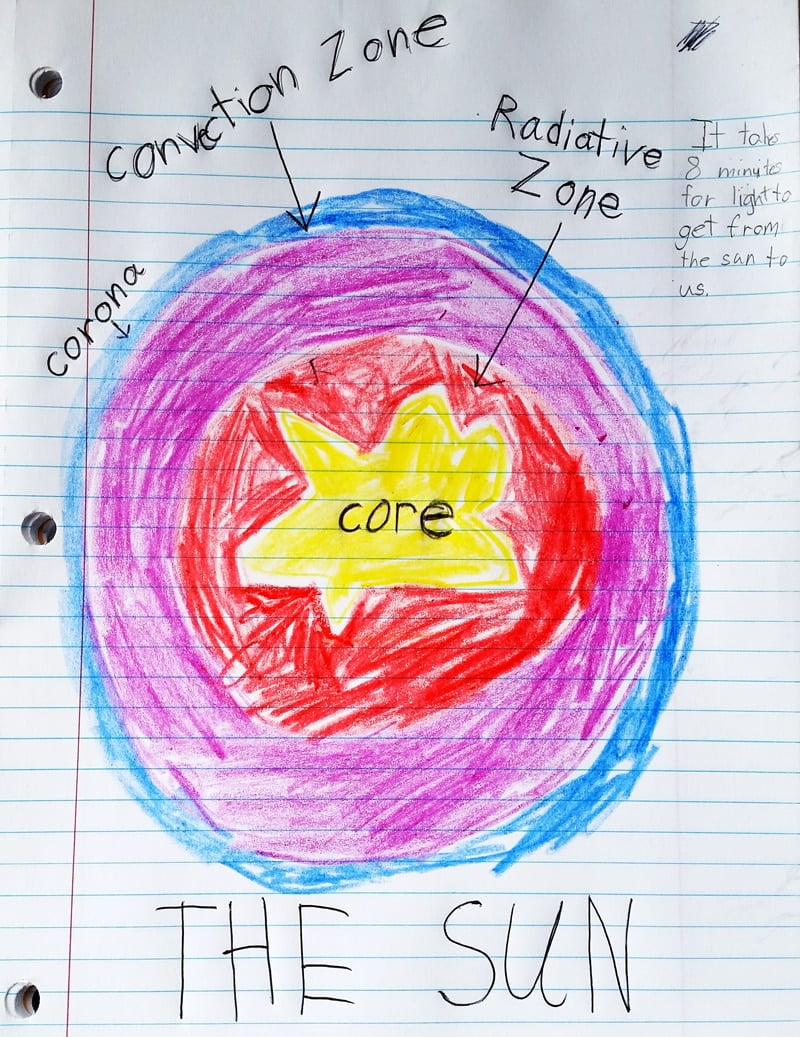
Famous Folks
Leonardo da Vinci kept many sketchbooks. He sketched far more things than he painted, and his sketches gave him ideas for inventions and a greater understanding of science, math, and art.
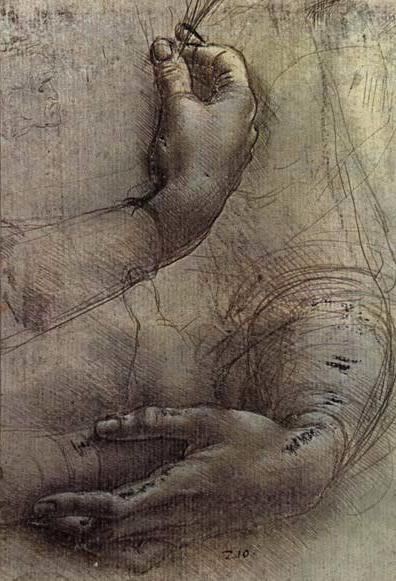
Did you know he also spent twelve years painting the Mona Lisa’s lips? He often sketched many versions of his art before painting it.
Free Samples
Try family-style homeschooling now with free samples of four Layers of Learning units when you subscribe. You'll get to try family-style history, geography, science, and arts with your children.
You can unsubscribe any time.
